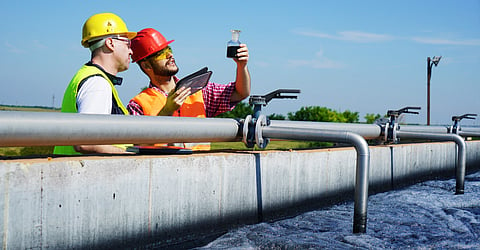Testing wastewater to find COVID-19
In July 2020, the UK Centre for Ecology and Hydrology announced a standardised UK system for detecting coronavirus in wastewater, to provide an early warning of future outbreaks, reducing the reliance of testing large populations. Sewage surveillance is one of the most promising methods to identify hotspots. The virus can be detected in the sewerage and wastewater supplies and indicate the potential for a major outbreak.
Using sensors to detect pollutants in wastewater is not a new concept. Currently, facilities require checks of pollution levels such as COD, BOD, and trace metals. Instant identification of viruses in the wastewater can narrow locations to a potential outbreak, preventing further harm before the virus has had a chance to take hold. This type of sensor network will have a lasting positive impact on many communities.
The UK detection system is being orchestrated by the UK government, consulting with universities, water companies and public research bodies. It aims to act in a similar way to that used in the Netherlands, run by the RIVM (the national institute for public health). This type of research will be beneficial as it will provide the funding for developing new and creative sensor solutions to monitoring wastewater from residential and industrial locations. But why are new sensors useful?
The methods by which wastewater companies have their supplies monitored for pollution incident identification have not changed in many years. These tried and tested processes require a worker to physically remove a sample, store it, and then take it to a lab where it is analysed. For some pollution identifying contaminants, this process from start-to-finish can take up to 10 days. As a result, it is common to log pollution incidents after it has had an impact on the community and environment. This raises the question - why the sensors cannot operate remotely? If they could, they would provide continuous monitoring levels, and give the waste-water companies a chance to identify pollution incidents earlier. The main barriers to adoption are simple: a lack of funding and a lack of desire to change. However, the plight of COVID will likely be the match to start this change. IDTechEx predicts that the monitoring of the water and wastewater industry will be over £2Bn by 2030. These monitoring sensors will be beneficial to the population and their surrounding environments. Overall, although there are sizeable start-up costs, research by IDTechEx predicts that the benefits will outweigh these costs.
Continuous monitoring of wastewater systems occurs in other industries (such as semi-conductor manufacturing), to monitor trace metals. These sensors and technologies could be used in potable water and waste-water supplies for similar monitoring. Not only can this, but wastewater plants, which closely monitor their processes, also increase their power efficiency. Pumps and blowers, for example, can be run at higher power levels only when they are required, based off monitoring measurements. The introduction of sensors into these industries can lead to increases in efficiency for the plants, reduction in pollution from contaminants or waste materials, and more. The plight of COVID has highlighted this is a market which can benefit from the collaboration between technology companies and water and wastewater providers.

